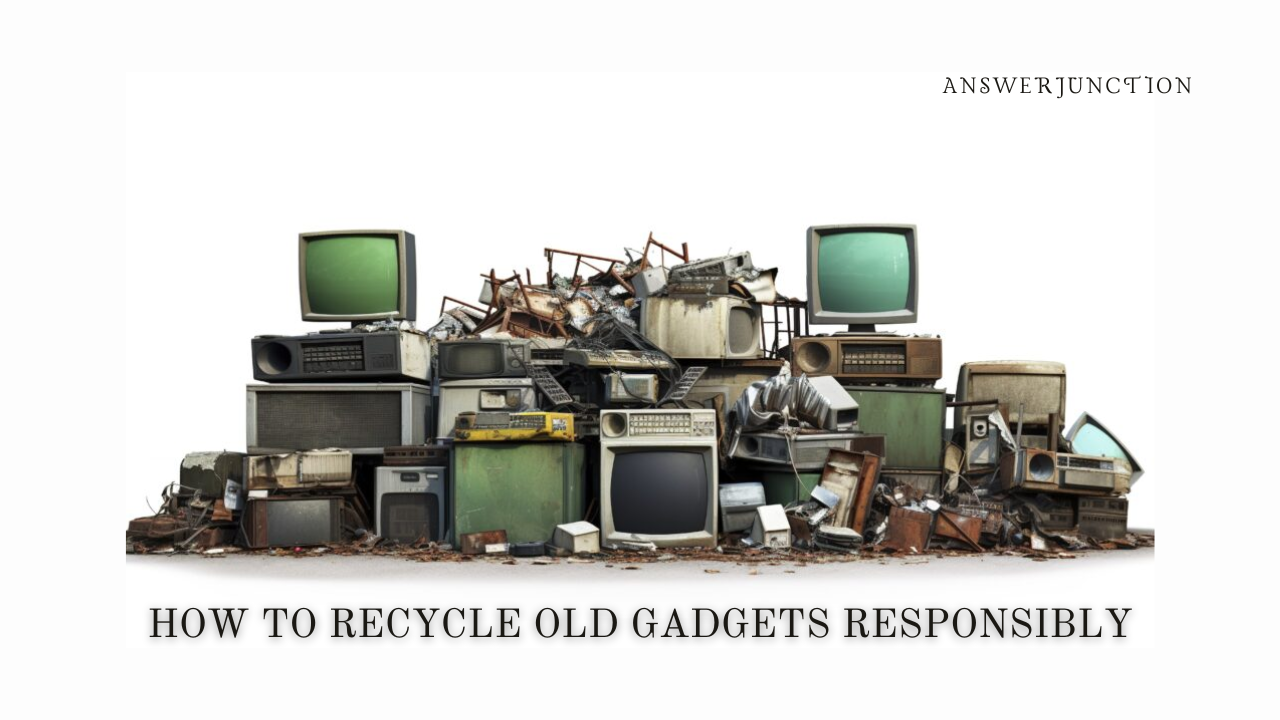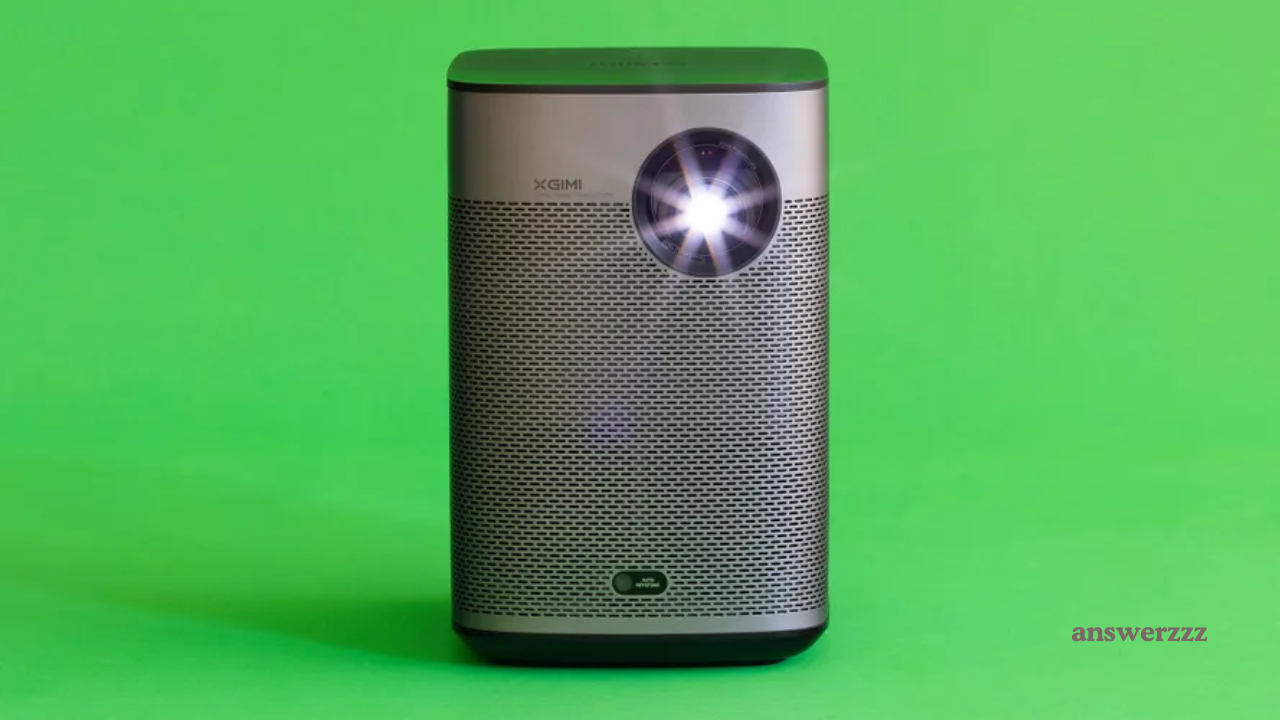As technology advances at lightning speed, the lifecycle of gadgets—whether they’re smartphones, laptops, tablets, or even home appliances—becomes shorter. Once these devices are outdated or broken, the question arises: how can we responsibly dispose of them? Electronic waste (e-waste) is one of the fastest-growing waste streams worldwide, and improper disposal can have devastating effects on the environment. Recycling old gadgets responsibly not only helps reduce environmental impact but also contributes to the conservation of valuable resources. In this guide, we’ll explore the importance of recycling e-waste, common ways to recycle old gadgets, and responsible practices for dealing with outdated electronics.
Why Recycling Old Gadgets is Essential
)
Environmental Impact
Gadgets contain harmful chemicals and heavy metals, including lead, mercury, and cadmium, which can contaminate soil and water if improperly disposed of. When left in landfills, these substances can seep into the earth, damaging ecosystems and posing health risks to humans and wildlife. Recycling prevents such environmental degradation by keeping these toxic materials out of landfills and reducing greenhouse gas emissions from the extraction of raw materials.
Conservation of Resources
Electronics are made from valuable resources such as metals (gold, silver, and copper), rare earth elements, and plastics that require significant energy and resources to extract. Recycling allows us to reclaim these materials, decreasing the demand for new extractions. Recycled materials from e-waste can often be used in the manufacturing of new gadgets, which minimizes the environmental costs associated with raw material mining.
Data Security
Discarding old gadgets without proper recycling methods can compromise personal data security. Devices like phones and laptops may store sensitive information, even after you delete files. Reputable recycling programs include secure data-wiping processes, which help protect your information while ensuring responsible disposal.
Steps to Responsibly Recycle Old Gadgets
1. Assess the Condition of Your Gadgets
Before deciding to recycle, evaluate the condition of your gadgets. If the device is still functional, consider options such as resale, donation, or repurposing, as reusing is often more sustainable than recycling. Functional gadgets can be of great use to others, especially for community programs or charities in need of technology for education and outreach.
2. Backup and Erase Personal Data
Before recycling or donating, always back up any important data and then securely wipe your device. For mobile phones, perform a factory reset, and for computers, use specialized software to ensure complete data removal. This step is essential for protecting your privacy and preventing data theft.
3. Locate Certified E-Waste Recyclers
Once ready, seek out certified e-waste recyclers. Certified recyclers follow strict standards for handling e-waste responsibly. Programs like e-Stewards and R2 Certification indicate adherence to safe recycling processes and ethical disposal practices. Many of these recyclers offer drop-off services or collection bins, making it convenient to recycle without worrying about the environmental impact.
Best Ways to Recycle Old Gadgets
Retailer Recycling Programs
Several major retailers, including Best Buy, Staples, and Apple, offer in-store recycling programs. These companies accept a variety of electronic items, and in many cases, they’ll accept devices from any brand. Some retailers offer discounts or trade-in options if your device still holds value. Not only is this convenient but retailer programs also typically partner with certified recyclers, ensuring the proper handling of hazardous materials.
Manufacturer Take-Back Programs
Many manufacturers have developed take-back programs to responsibly handle the disposal of their products. Brands like Samsung, Dell, and HP offer programs allowing consumers to mail back old devices for recycling. Apple’s recycling program, for instance, includes the option to trade in old devices in exchange for a discount on new Apple products. Manufacturer take-back programs are a reliable choice since these companies are often committed to handling e-waste responsibly.
Municipal Collection Events and Programs
Most local governments now offer e-waste collection events or have permanent drop-off locations. Check with your local waste management authority to find out if these programs are available in your area. Community collection events, often scheduled annually or biannually, offer convenient ways to dispose of e-waste without fees. Many cities also have designated e-waste drop-off sites where residents can recycle items all year round.
Donating Old Gadgets

Nonprofit Organizations
Several nonprofit organizations accept old gadgets to refurbish and donate them to individuals and communities in need. Programs like Computers for Schools, World Computer Exchange, and Goodwill accept donated devices, allowing you to contribute to a good cause while ensuring your gadgets are reused.
Local Schools and Libraries
Many educational institutions and libraries may accept donations of working electronics to support students and patrons. Schools especially benefit from computers, tablets, and printers, which can be used to provide resources for students who may not have access to technology at home. Check with local schools and libraries to see if they have a technology donation program or are interested in your functional devices.
Upcycling and Repurposing Gadgets
Creative Uses for Old Devices
Old gadgets can often be repurposed for new uses around your home. For example, an outdated smartphone can serve as a music player, GPS device, or security camera. Tablets can be transformed into digital picture frames or used as dedicated e-book readers. Upcycling not only prolongs the life of your devices but also reduces demand for new products, supporting a more sustainable lifestyle.
DIY Projects and Learning Tools
For tech enthusiasts, disassembling old devices can be a great way to learn about electronics and potentially create DIY projects. With the right tools, an old laptop or desktop can be rebuilt, upgraded, or repurposed as a server for home media or storage. Some community workshops even host “deconstruction” events where participants learn how to disassemble and repurpose e-waste, providing a hands-on approach to recycling.
Understanding E-Waste Regulations and Certifications
To encourage responsible recycling, many governments enforce e-waste regulations, promoting safe disposal practices and protecting the environment. Here’s an overview of essential e-waste regulations and certifications to help you make responsible recycling choices:
U.S. E-Waste Regulations
In the United States, e-waste regulations vary by state. California, for example, has strict e-waste disposal requirements, prohibiting electronic items from being discarded in landfills. Many states have established Extended Producer Responsibility (EPR) laws that require manufacturers to participate in the collection and recycling of their products.
European Union’s WEEE Directive
The European Union’s Waste Electrical and Electronic Equipment (WEEE) Directive is one of the most comprehensive e-waste laws globally. It mandates that producers take responsibility for the disposal of electronic products, which has led to improved recycling infrastructure and reduced environmental impact.
E-Stewards and R2 Certifications
The e-Stewards and R2 certifications are two internationally recognized standards for responsible e-waste management. E-Stewards certification ensures that recyclers handle e-waste ethically and that no waste is shipped to developing countries. The R2 (Responsible Recycling) certification focuses on health, safety, and environmental protocols for recyclers, offering consumers confidence that certified companies adhere to high standards.
Common Missteps in Recycling Old Gadgets

Improper Disposal in Household Trash
A common mistake is to dispose of electronics with regular household waste. Many people aren’t aware that e-waste is prohibited from landfills due to its toxic components. Even small gadgets like batteries and chargers should be disposed of through proper e-waste channels to prevent environmental harm.
Ignoring Data Security
Forgetting to erase personal data before recycling is a frequent oversight that can lead to data theft. Many devices retain data even after deletion, so make sure to perform a factory reset or use secure data-wiping software before recycling your gadget.
Using Uncertified Recyclers
Some recycling facilities do not adhere to ethical e-waste practices and may export waste to countries with inadequate environmental protections. These operations harm both the environment and the people involved in dismantling devices under unsafe conditions. Always verify that the recycler is certified by a reputable organization like e-Stewards or R2.
The Future of E-Waste Management
As technology consumption grows, so does the need for effective e-waste management. Industry leaders and policymakers are working toward circular economy models, which aim to minimize waste by designing products that are easier to recycle or repair. Extended Producer Responsibility (EPR) programs, where manufacturers are accountable for their products’ end-of-life disposal, are likely to expand. For individuals, being conscious about recycling and supporting sustainable initiatives can make a positive impact on reducing global e-waste.
Final Thoughts: Taking Responsibility for Our Gadgets
Recycling old gadgets responsibly is more than just an environmental duty—it’s a collective responsibility. By choosing certified recycling programs, supporting donation and upcycling initiatives, and understanding e-waste regulations, each of us can contribute to a healthier planet. As consumers, we have the power to make a difference by properly managing our tech waste and supporting a circular economy that values sustainable consumption. In the long run, these efforts not only reduce environmental impact but also promote a culture that values both innovation and responsibility.



